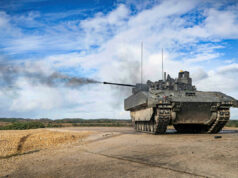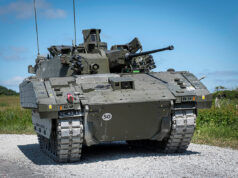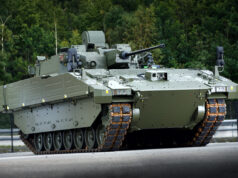Almost three-quarters (71%) of senior defence decision makers believe that using data to improve operational readiness is the single most important area of focus for technology exploitation in the sector.
However, given the current, disparate location of much of that data, perhaps the primary aim before using it, should be to connect it.
Being operationally, or ‘mission ready’ in this sense is complex for a number of reasons. A blurring of lines between physical and digital threats represents a broader attack surface than ever before, with much of the danger lurking in the grey zone and across cyberspace.
This isn’t to say that traditional, physical examples of conflict are abating, either. Mounting geopolitical tensions are also putting pressure on national defences to be ‘ready’.
Then there is the nature of investments into large and complex assets – such as warships and fighter jets – that would facilitate this ‘readiness’. As with organisations in all sectors, there is an expectation to make cost-effective decisions and to be able to display positive returns on investments for each procurement, maintenance or upgrade activity.
Underpinning the ability to be mission ready is data. Importantly, this needs to represent a single source of truth to work from, where decisions around key asset investments, ongoing maintenance, monitoring, augmentation and effective deployment can all be made with confidence and clarity.
The data disconnect
Secure and timely access to quality data is key to keeping defence assets in a state of operational readiness and, ultimately, to strengthening the nation’s defences.
It’s why 76% of defence decision makers have identified a direct link between data and defence readiness, with those on the frontline particularly eager to establish a more fit-for-purpose, digitised, asset management model.
The technologies to generate and produce this data around each individual asset already exist. Unlocking insight that could inform decisions around asset maintenance, readiness, performance and value is already a real possibility.
The problem, however, is then connecting this data, so that it is, firstly, reliable, and secondly, seamlessly and securely shared with those who require real-time visibility.
At present, vital information needed to help make strategic decisions around assets is typically held across a web of internal and third-party systems and applications. The result is a complex, often repeated – or even conflicting – matrix of data coming from divided silos.
This fragmented status quo makes it difficult for any user to access a reliable and consistent source of truth – one dependable representation of an asset’s status, relative to the wider infrastructure and real-time capability.
Often, what transpires is decisions that work against the grain of mission readiness, or at least cost effectiveness. Unnecessary downtime to repair or maintain assets that shouldn’t have been a priority, can be every bit as costly as overlooking assets that are urgently in need of maintenance or augmentation.
It all comes down to a lack of visibility, which then translates to miscommunication, and – ultimately – mission unpreparedness.
Digital Asset Management: securely connecting information
The fragmentation challenge can’t be underestimated. If a multitude of disparate systems managing different assets are creating an equally broken chain of information, with no single visibility of the entire infrastructure and portfolio, then real-time decisions can’t be weighed up.
Trade-offs will always need to be made. But at present, it is difficult to know where to prioritise or accurately target investments at the right moment, as each asset is being treated separately.
To combat the issue and to realise that stated ambition of data-driven mission readiness, there now needs to be a move towards aggregation and the breaking down of these data silos.
A single Digital Asset Management solution is needed to bring the entire web of systems together. Taking this approach, modular enhancements of each asset are still enabled, albeit as part of a holistic picture of the whole situation – capacity, capability, prioritisation and ROI.
Fortunately, solutions exist that can be seamlessly and securely plugged into an organisation’s current environment. This way, decision makers can gain a connected view across their entire infrastructure without needing to invest in a multitude of new systems. These solutions can also be scaled up or down depending on an organisation’s needs – whether it requires a simple asset management capability or fully integrated product support.
Effective Digital Asset Management doesn’t just ensure assets remain at peak performance for longer. Through quick insight, decision makers (in office and on the frontline) will also be provided with the perspective necessary to make more accurate real-time decisions, while also being freed up to focus on broader strategy and prioritisation – rules to feed into that renewed Digital Asset Management model.
Fighting fit and mission ready
Increasing asset availability, while decreasing complete lifecycle costs, to achieve true mission readiness is a very real possibility if these siloed sources of data are securely brought together under one asset management roof.
They can also be complemented by the adoption of synthetic environments to help test, trial and improve assets, which not only aids the maintenance process, but also unlocks higher release frequencies of new solutions as well.
In this reimagined asset management ecosystem, domains are connected, information is safely merged and defence leaders can strategise with confidence that their assets are fighting fit and mission ready.














Digital assets doesn’t just mean how many laptops MOD has, it includes software used, cloud and edge processing capability, networks, their state, including obsolence management, evergreening, deduplication between services, and availability acrosss the military. It’s the means by which we get data to the warfighters and from the battlefield to C2 and to the analysts in the UK. However, it isn’t shiny ehough to attract the priority it needs to be achieved in a timely manner. I wonder how many comments it will get on this site.
There is a whole catageory of necessary tasks required to get the basics right but which makes for poor headlines. They don’t get the funding they need nor the political push, because which minister wants to talk about digital asset registers? The problem is that when there’s a financial squeeze on, without champions, these are the tasks that get left behind. Like CEC/NEC and the like, it may still be on the agenda 20 years from now, when in the era of simulations integrated forces and systems of systems a comprehensive central understanding of what we have is crucial.